Pumping Station the Vigilance
South of the village of Kolhorn lies in the open landscape the post-war polder pumping station de Waakzaamheid. This municipal monument is located at the foot of the Westfriesedijk and is surrounded by the Groetpolder, the Braakpolder and the Weerepolder. The pumping station keeps the United Raakmaats and Niedorperkog boezem leveled.
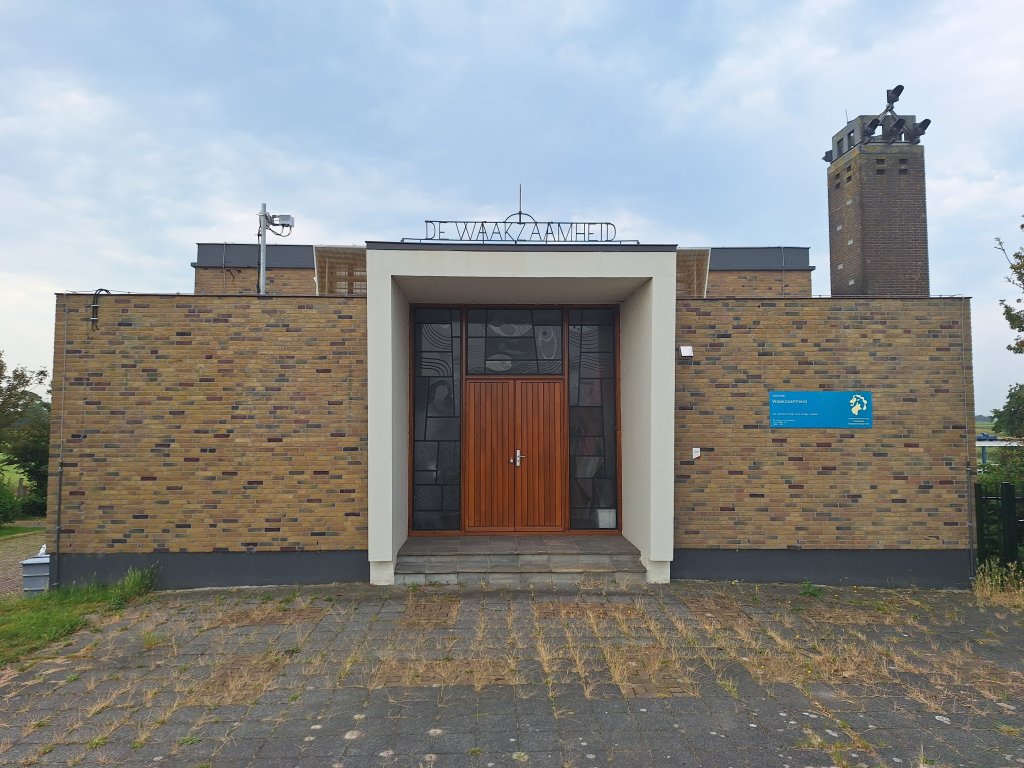
Early drainage
In the vicinity of the present pumping station there were five iron mills near Lutjewinkel from 1654 to 1911. They fed the Niedorperkoggeboezem. This type of mill 'stroked' the water up in the upper chamber. It was then discharged into the sea at low tide. The other large West Frisian polder, the Raaksmaatsboezem, had 13 iron mills in the vicinity of Oudorp and near Rustenburg in 1864. They milled into the adjacent Schermerboezem. In addition, it was possible to discharge into the Zuiderzee through a large drainage canal to Aartswoud, the Langereis.
In 1875 an auxiliary steam pumping station was built next to the mills of the Niedorperkoggeboezem to assist in case of heavy rain and/or low wind. In 1911 the mills were demolished in favor of a diesel pumping station. The Raaksmaatsboezem also partially switched to steam in 1894. That year a large scoop wheel steam pumping station was built at the northern end of the Langereis.
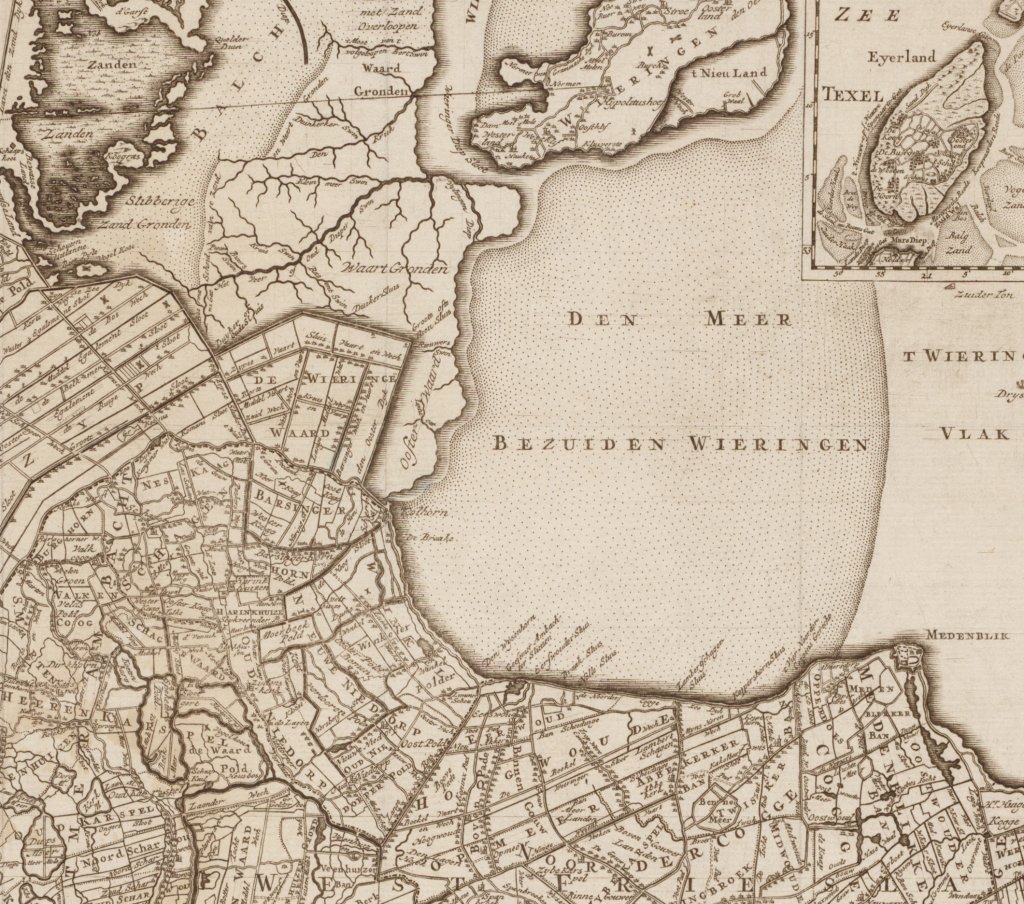
Vereenigde Raaksmaats- and Niedorperkoggeboezem
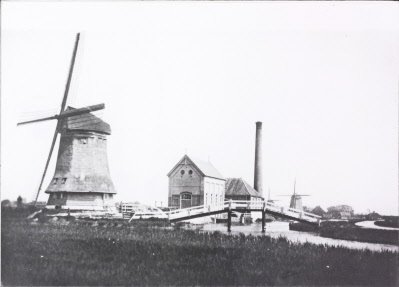
After decades of wrangling, a start was made in the 1920s to open up West Friesland within the Omringdijk by constructing a series of new shipping channels. The new waterways also affected the old boezems. On Sept. 15, 1941, the Niedorper Verlaat was opened without fuss, merging the Niedorperkoggeboezem and Raaksmaatsboezem into the Vereenigde Raaksmaats- en Niedorperkoggeboezem (VRNK-boezem). The western part of the ring ditch of the Heerhugowaard polder included in the Alkmaar-Kolhorn canal joined the Schermerboezem. The new separation between both storage basins became the Roskamsluis lock at Noordscharwoude.
The administrator of the Schermerboezem, the Hoogheemraadschap van de Uitwaterende Sluizen, added the VRNK-boezem. The new VRNK-boezem was drained by the three existing pumping stations: the steam pumping station at Aartswoud (built in 1894), the steam pumping station (from 1875) at Lutjewinkel and the diesel pumping station (from 1911) there.
New pumping station
In the mid-1950s, the board of "Uitwaterende Sluizen" started thinking about modernizing the drainage of the VRNK basin. The existing pumping stations did not have enough capacity, were also totally obsolete, and finally the long feeder canal to the pumping station in Aartswoud turned out not to function properly. As a result, the stop signal had to go out regularly because of too high water levels in the storage basin. Then all the pumping stations of the polders that discharged their water into the VRNK storage basin had to be shut down. Especially in the extensive horticultural area of the Langedijk this caused a lot of damage.
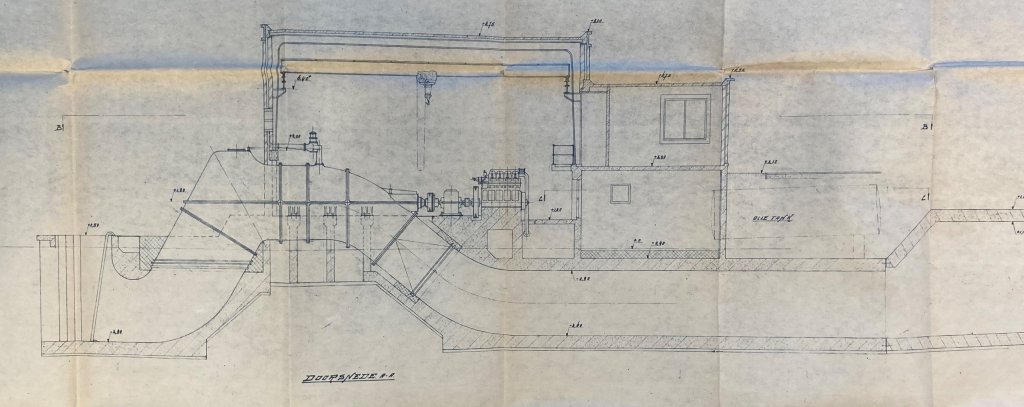
Built in 1959, the pumping station, de Waakzaamheid, was erected at the end of the Alkmaar canal (Omval) Oudkarspel-Kolhorn next to the Braaksluis and discharges into the Kolhornerdiep. Designed by K. van der Mast (of the engineering firm A. van der Mast), the pumping station was officially put into operation in March 1960. It was built in the style of functionalism, in which the form of the building follows its function. This resulted in a sober architecture with few decorative elements. This typifies the era of reconstruction with limited construction budgets after World War II.

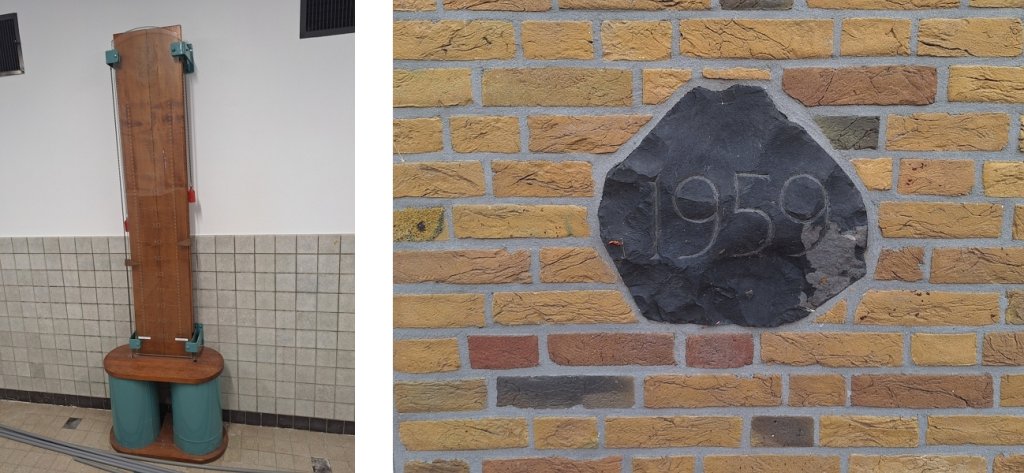
The pumping station contains two screw pumps originally powered by Stork- Ricardo diesel engines. Next to the pumping station is still the chimney for exhausting the fumes. Diesel was cheaper than electric pumping at the time.
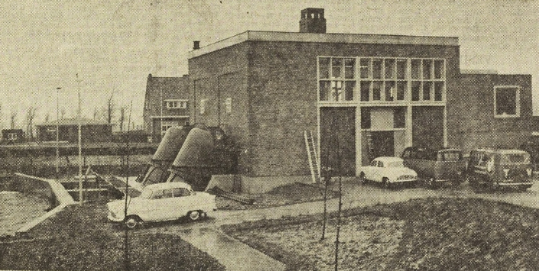
The polder pumping station drains an area of 10,000 hectares. Via the canal south of the pumping station, the water is raised from - 0.60 cm NAP to - 0.40 cm NAP. The water is then discharged via Kolhorn into the Amstel Lake and from this lake through the Oostoeversluis into the Wadden Sea.
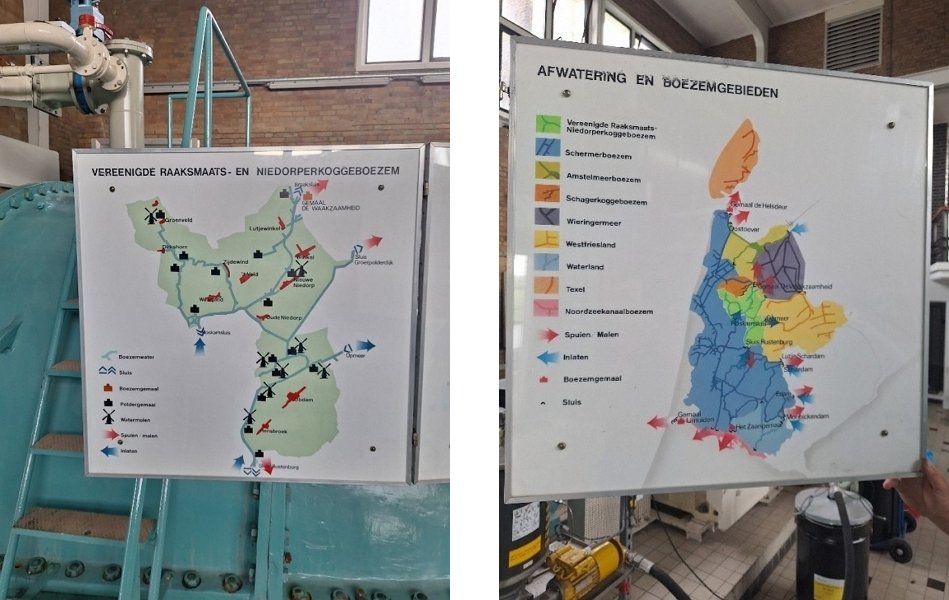
Complex
On the west side of the pumping station is the Braak lock and the Braak bridge with the former lockkeeper's house. On the east side is the former machinist's house, also designed by K. van der Mast. The cost of building the pumping station and machinist's house at the time was 1,400,000 guilders.
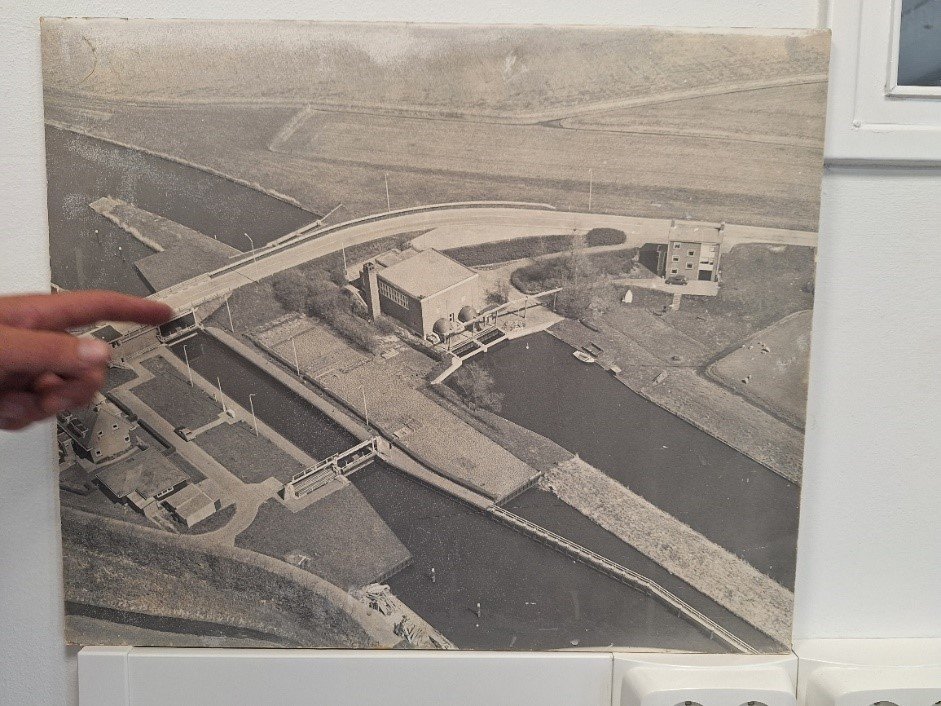
Modernization
In 2003, the pumping station was modernized. In the process, the diesel engines were removed and replaced with electric motors. The capacity of the pumping station was thereby increased from 1,000 cubic meters to 1,800 cubic meters per minute. The two oil tanks are still present, but have since been remediated.
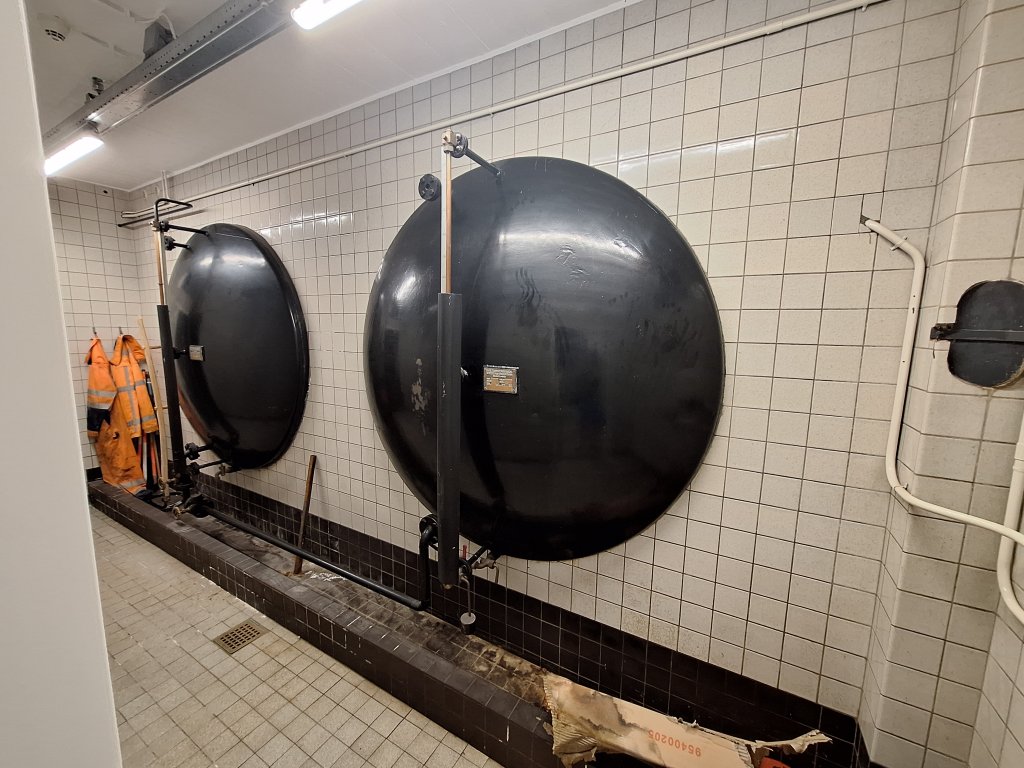
Additional
Hiking
- Kromme Gouwroute (Wandelnetwerk Noord-Holland)
Bikes
- Bicycle route Westfriese Omringdijk (Bicycle Network)
See also:
The old diesel engines were given a museum purpose. One was moved to the Engine and Crafts Museum in Nieuwe Niedorp and the other to steam pumping station De Tuut in Appeltern.